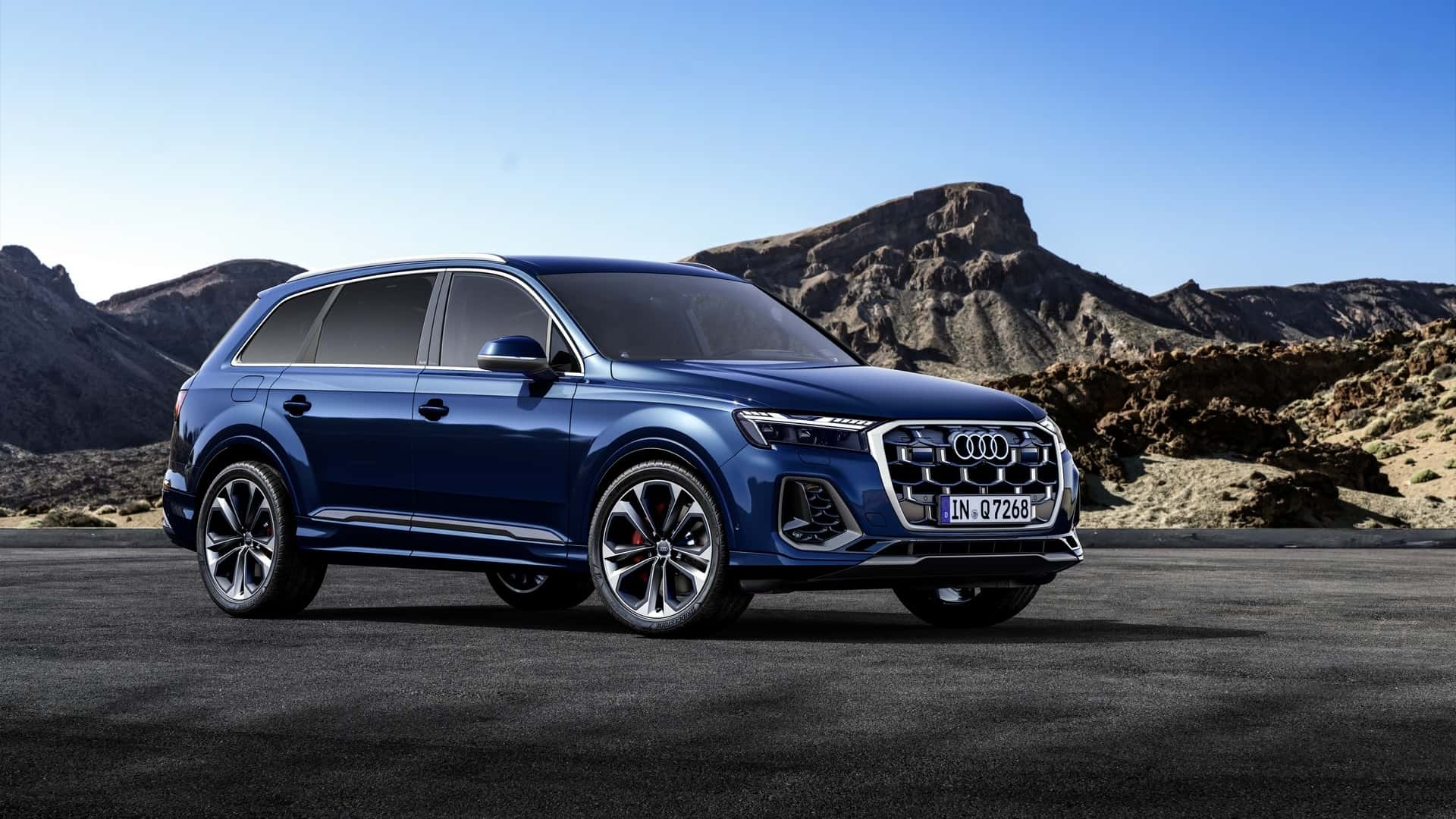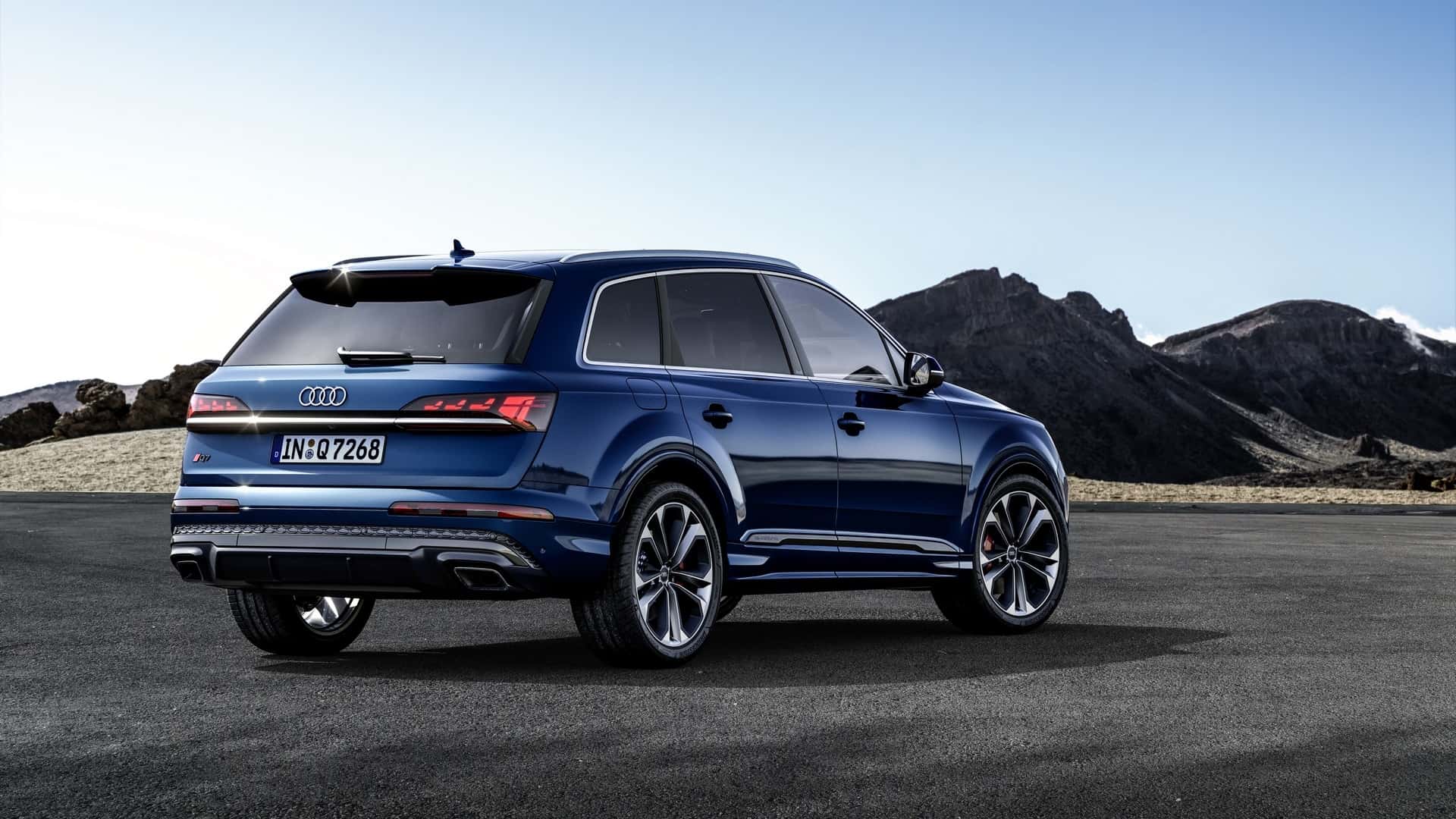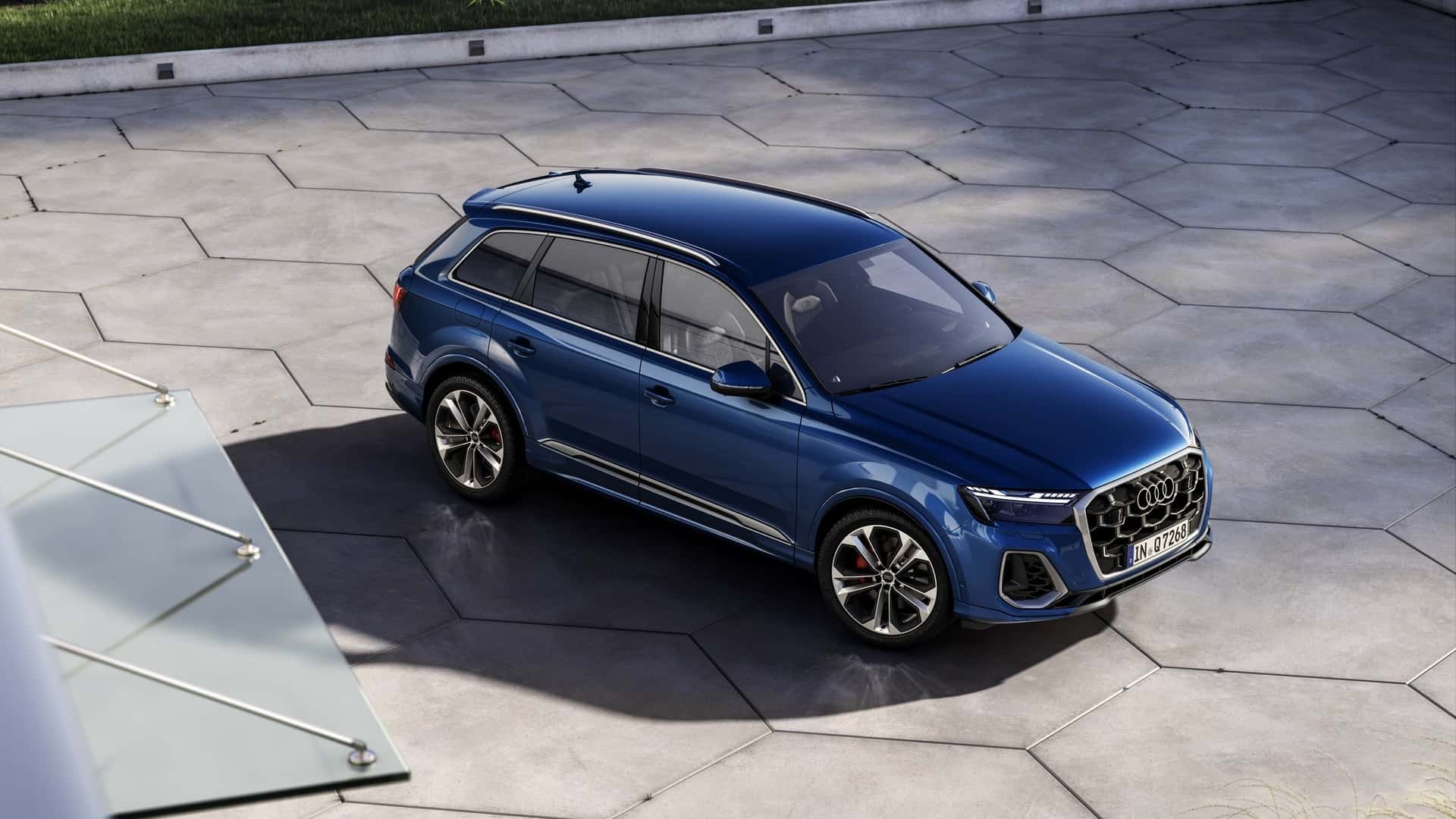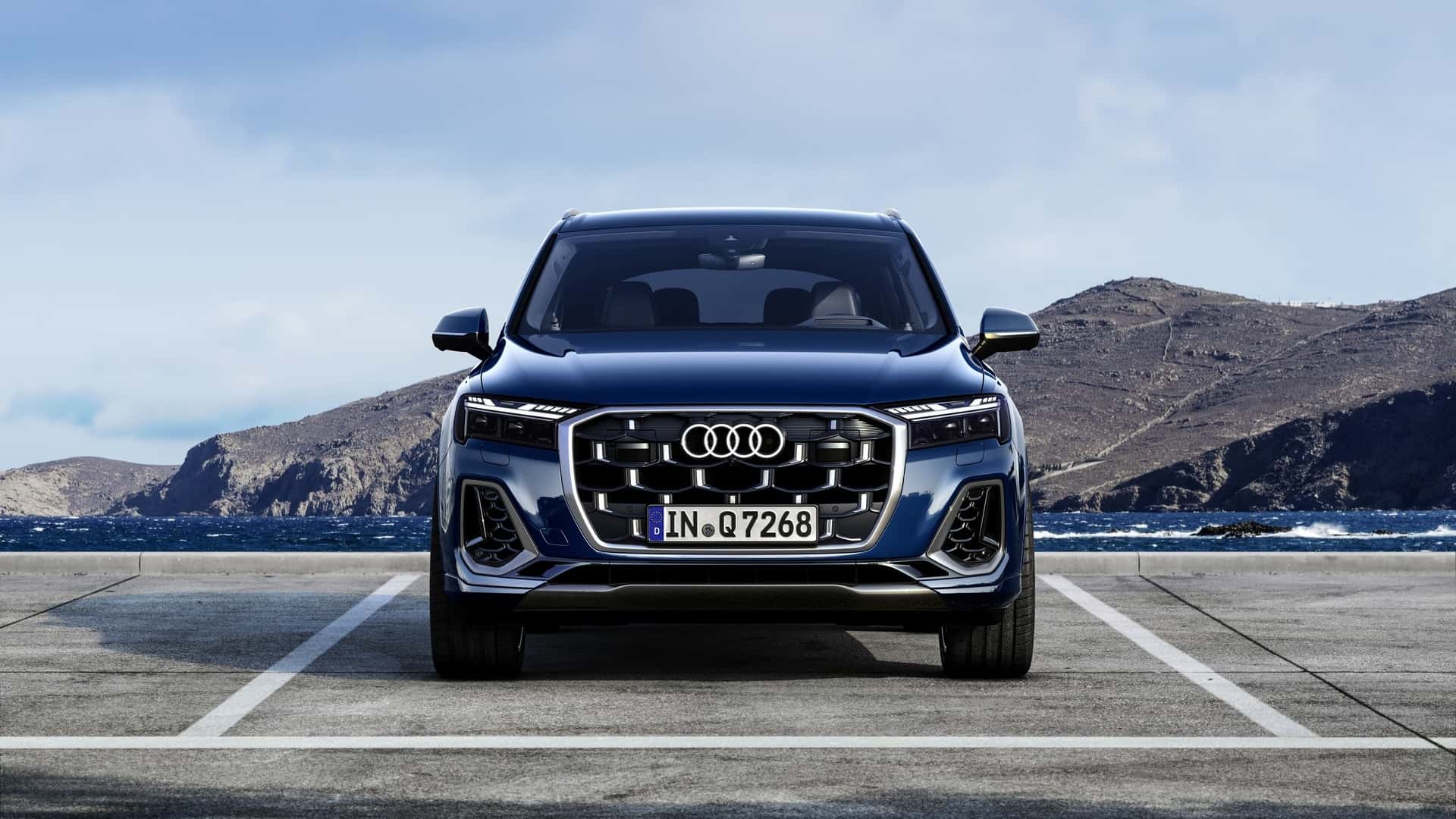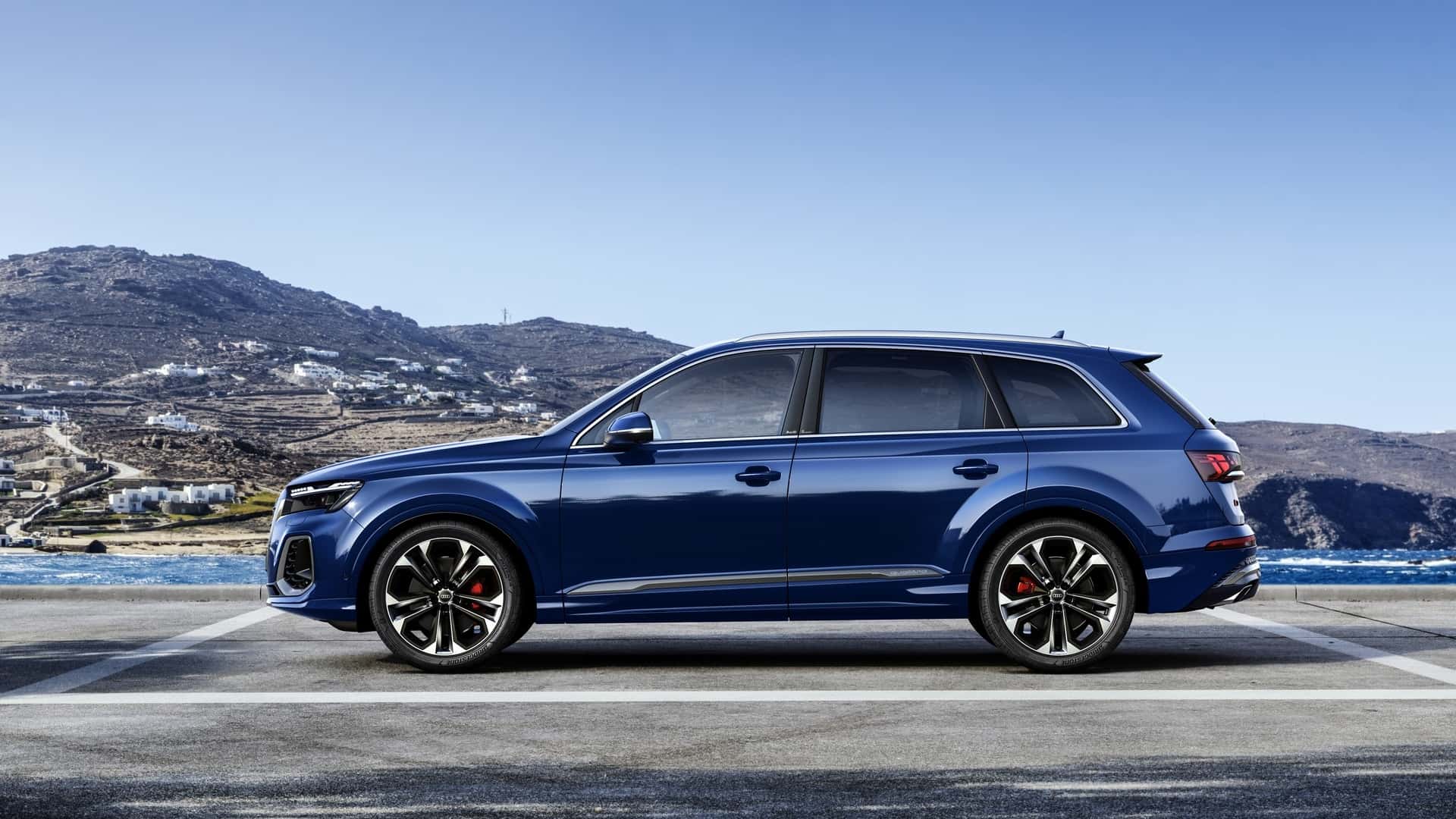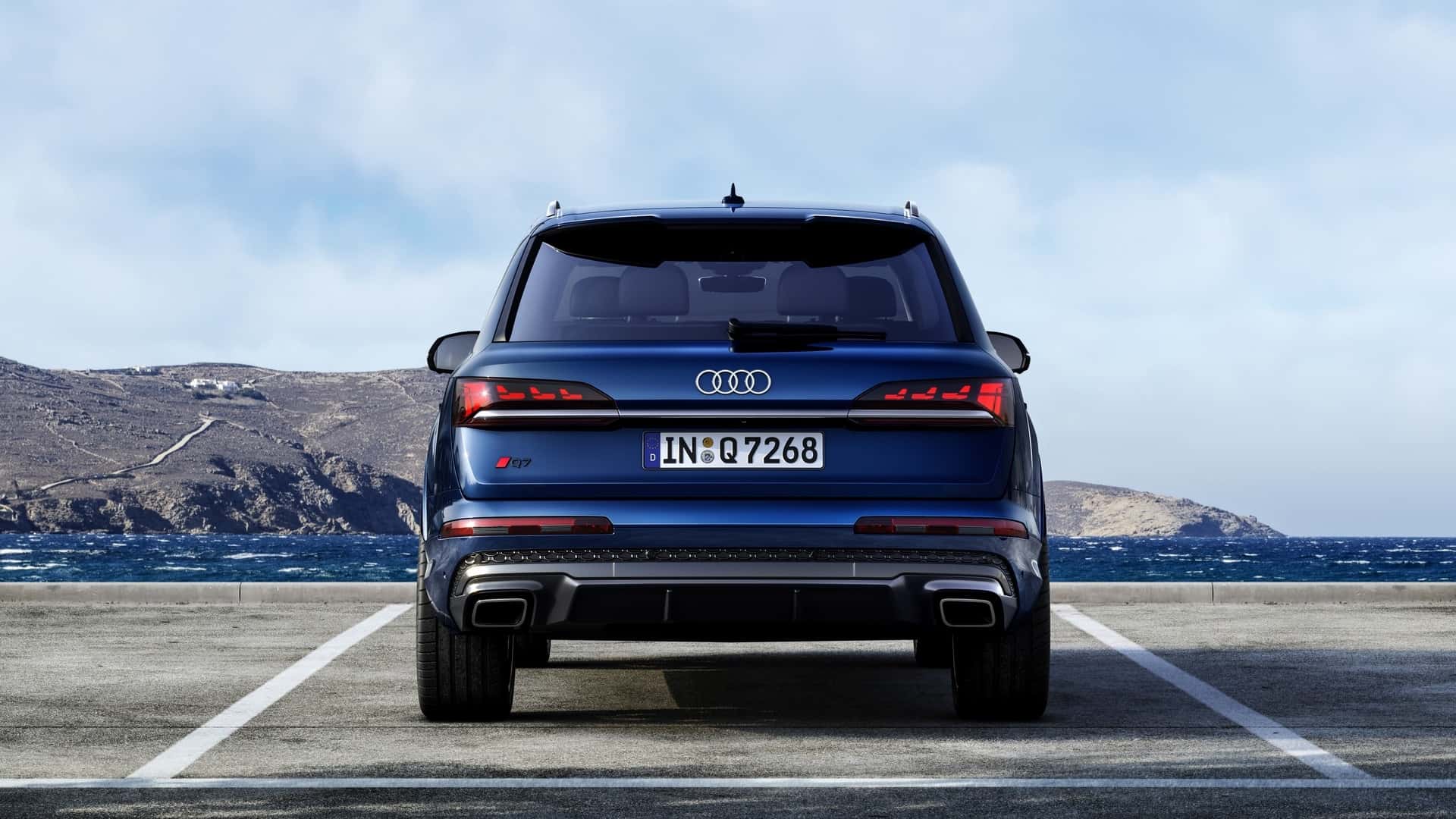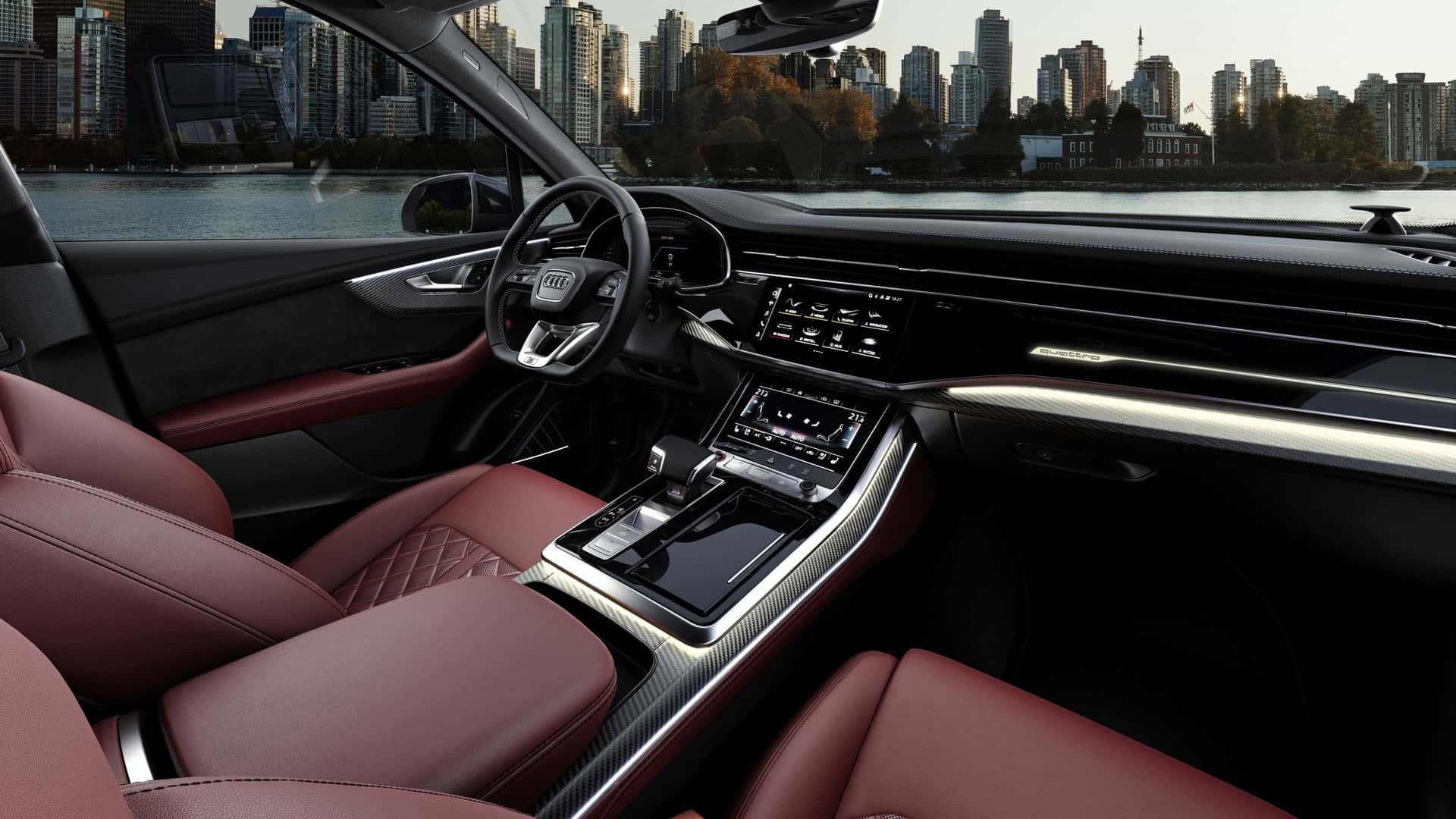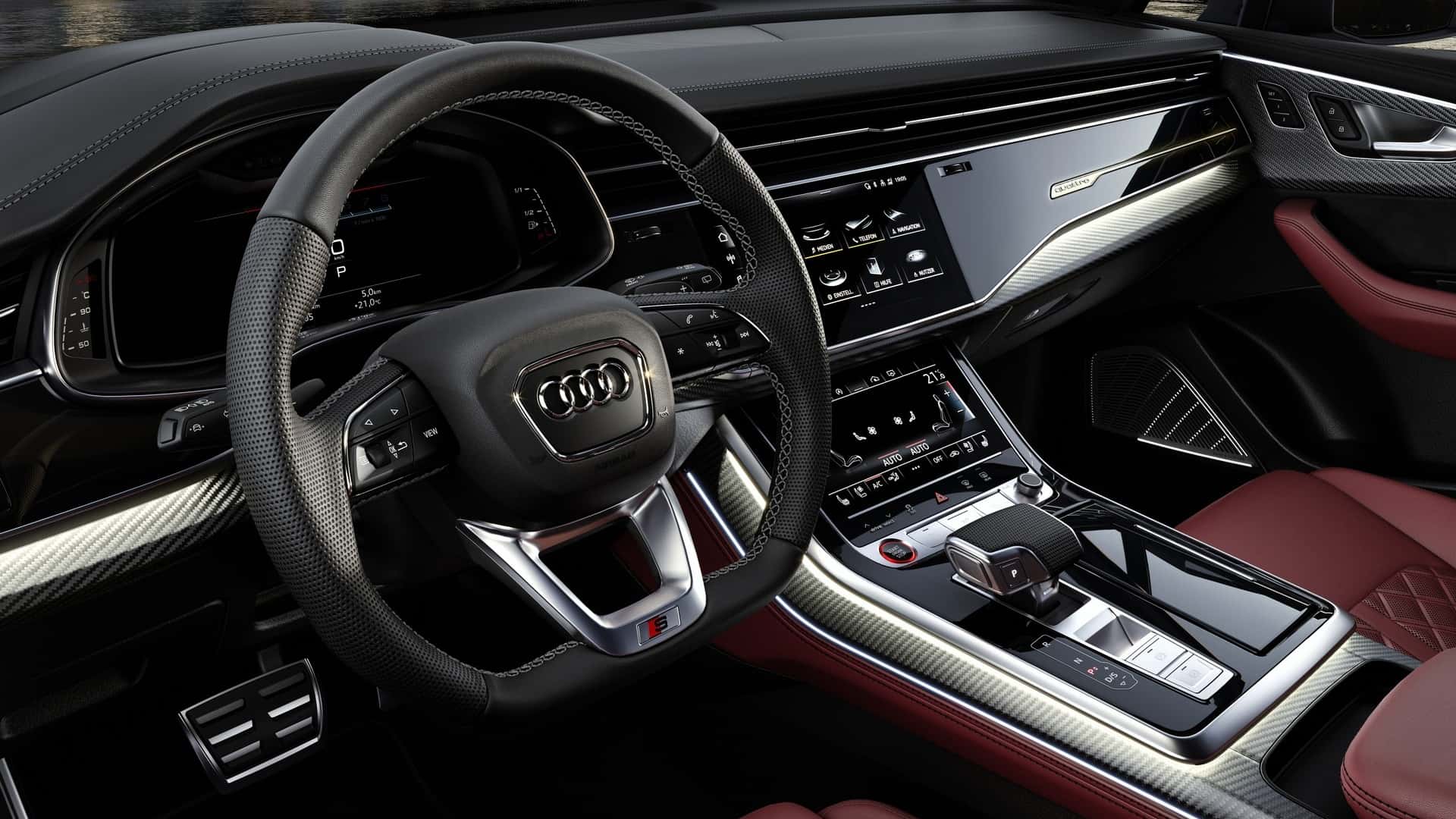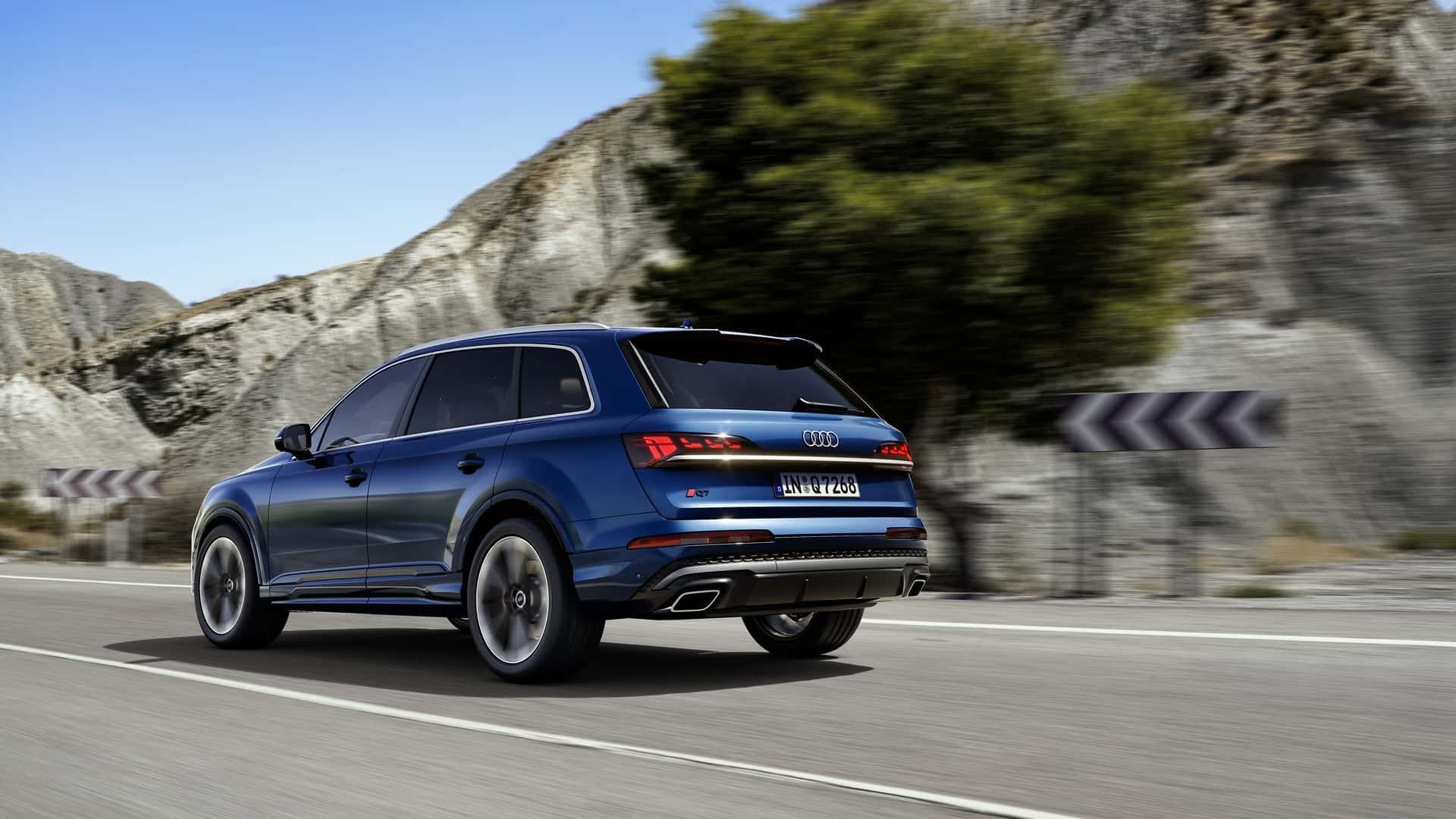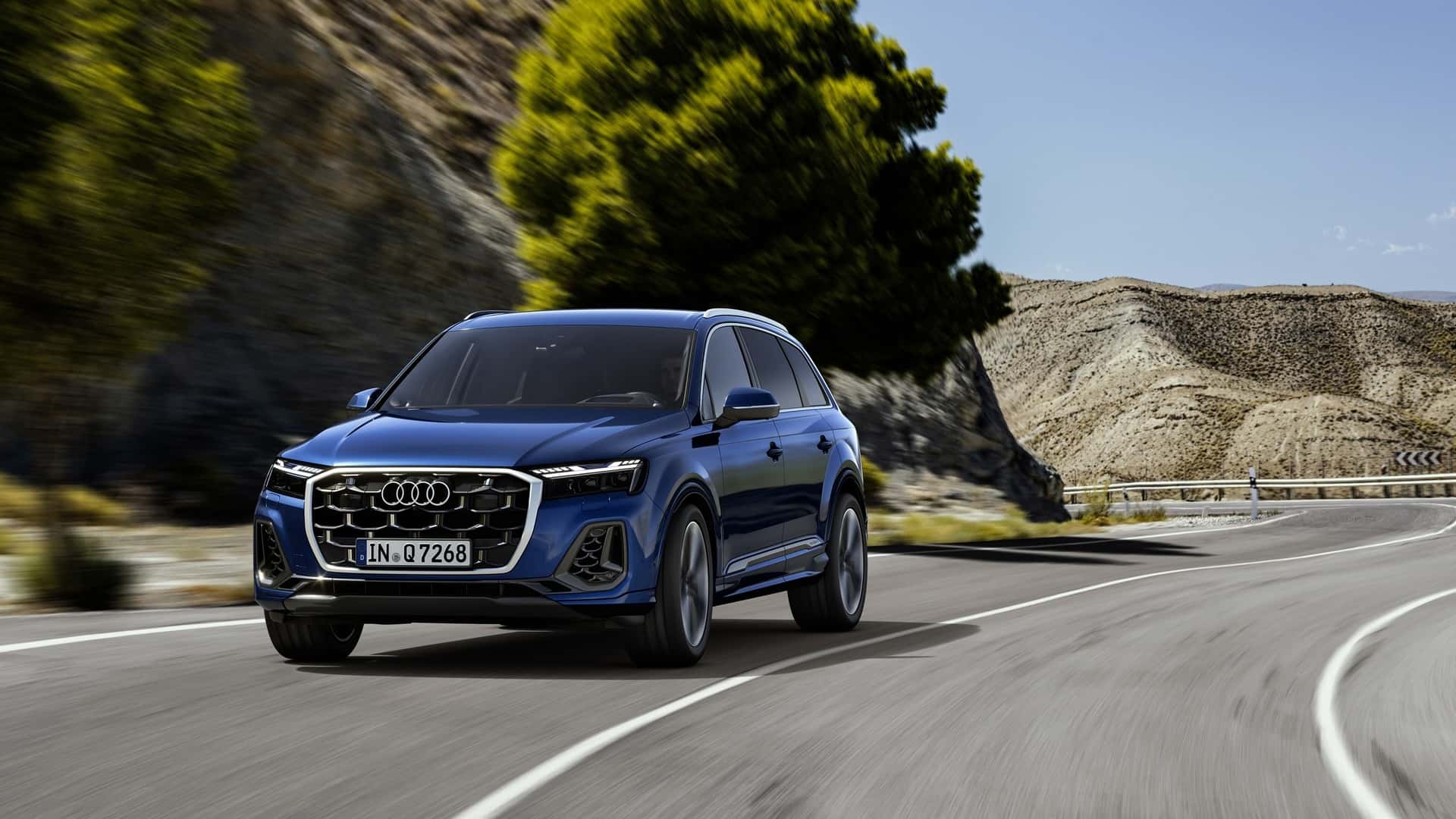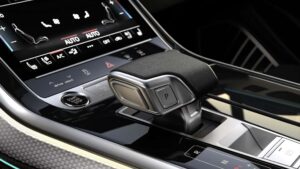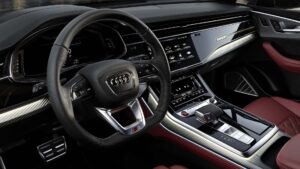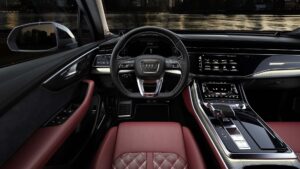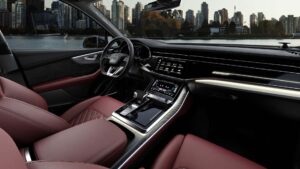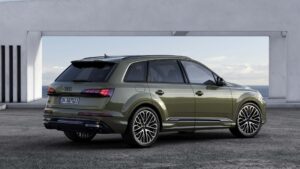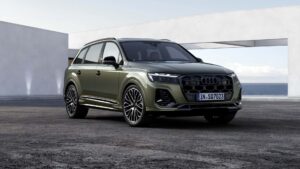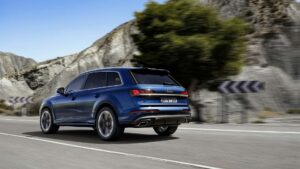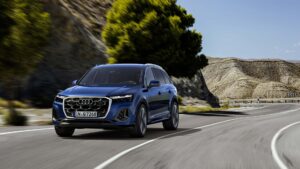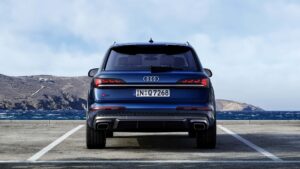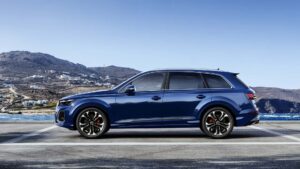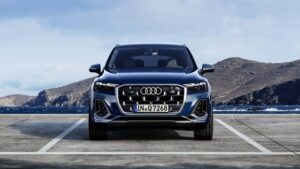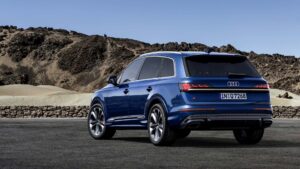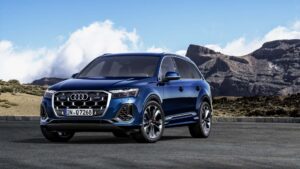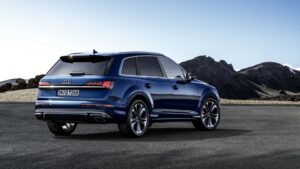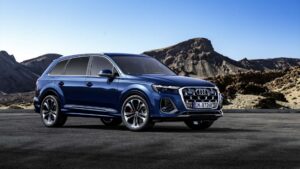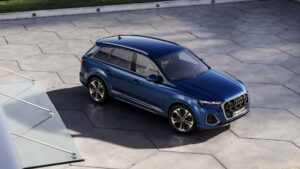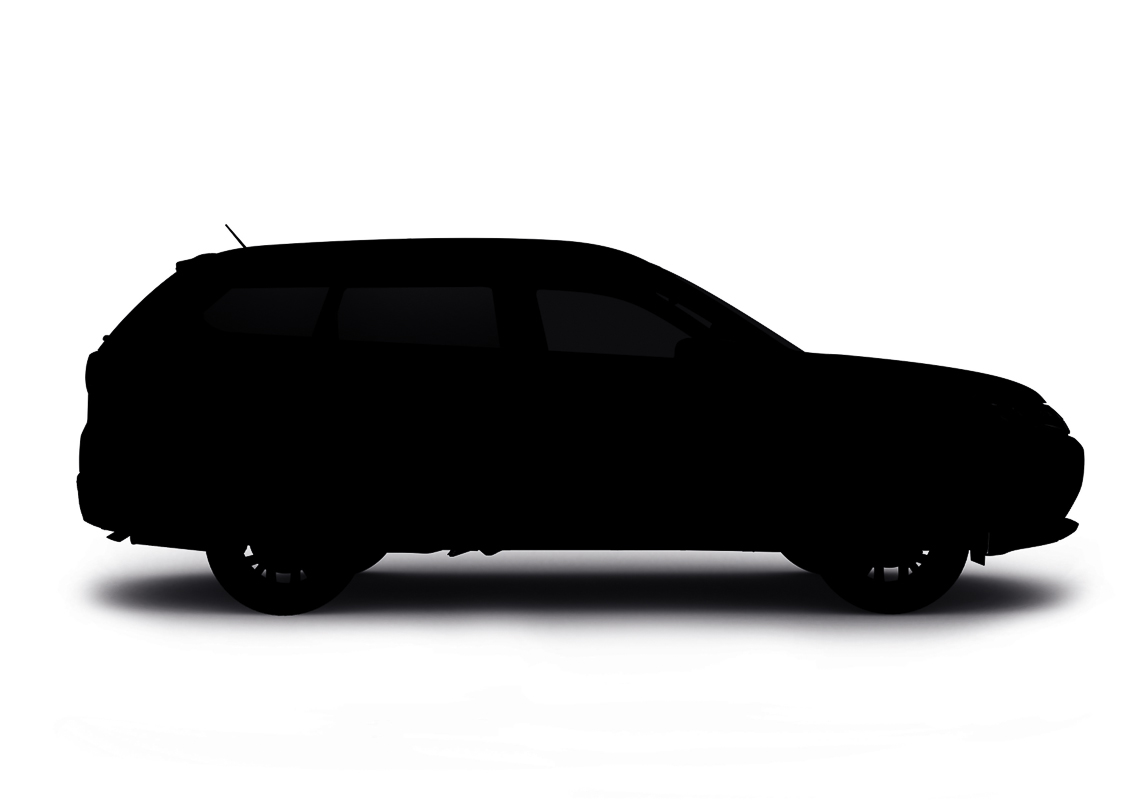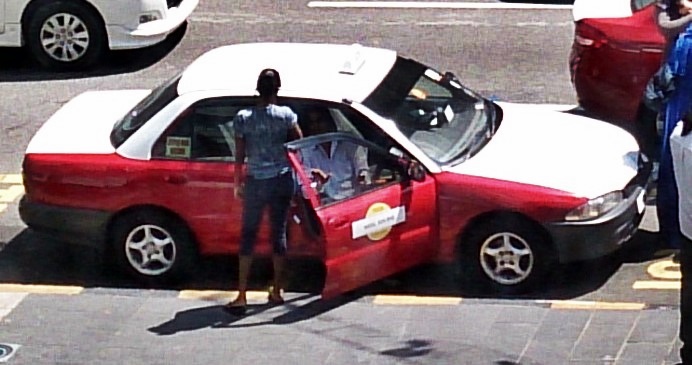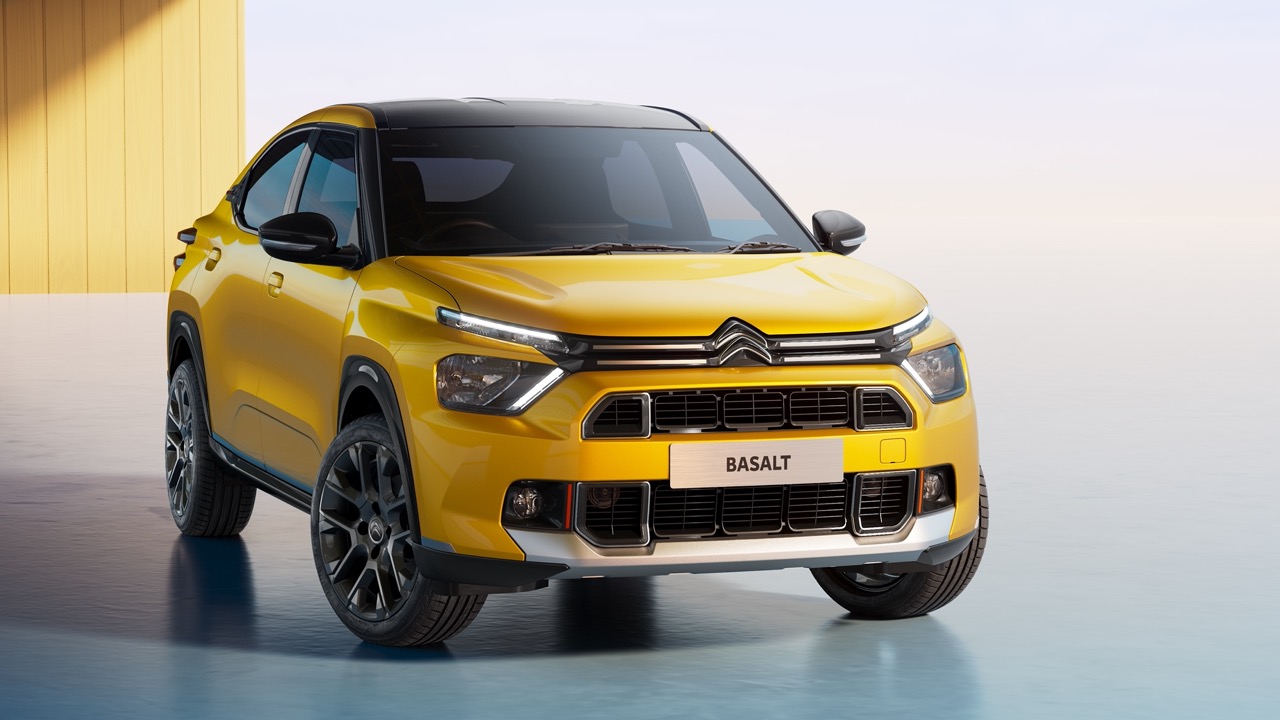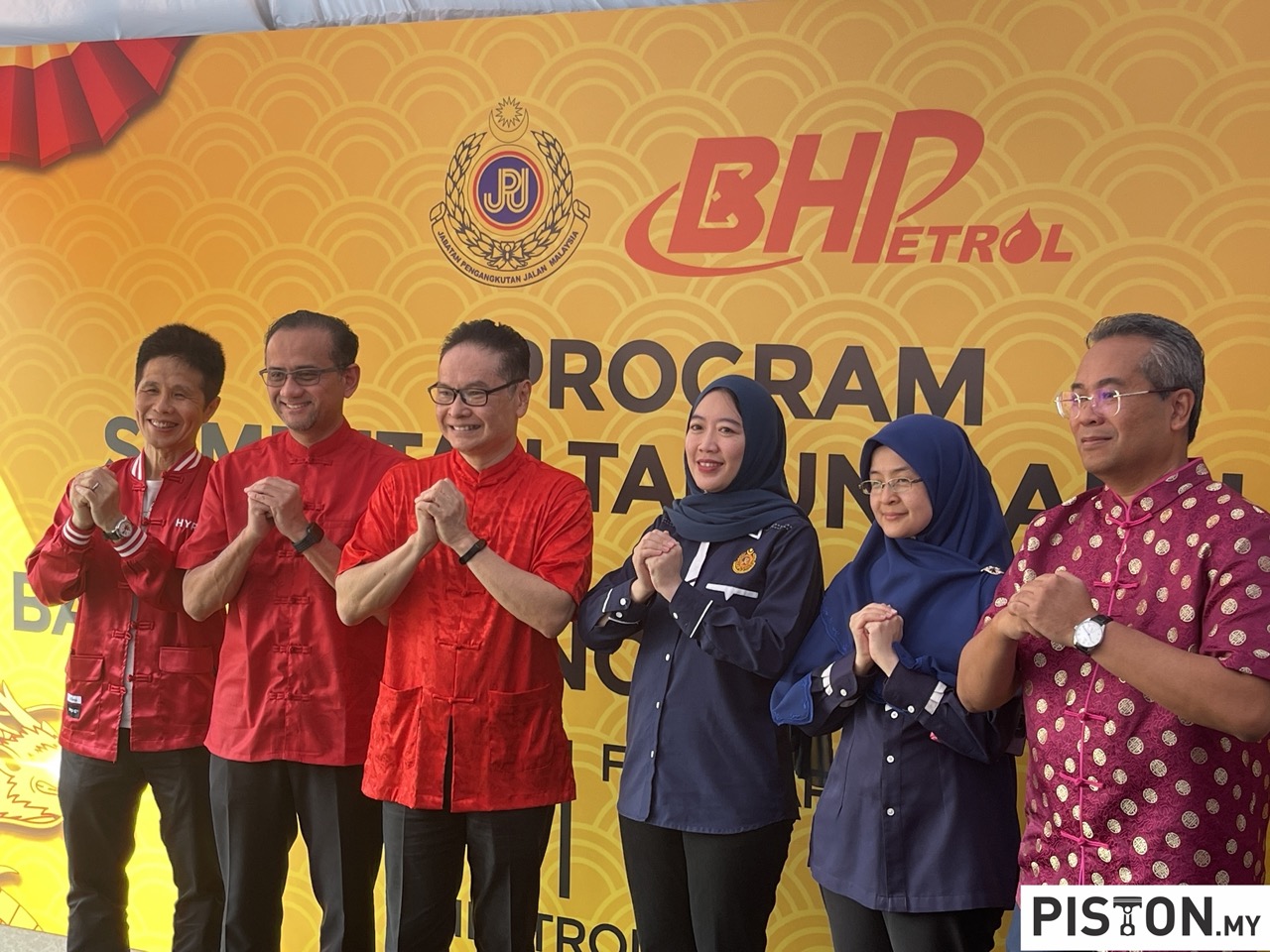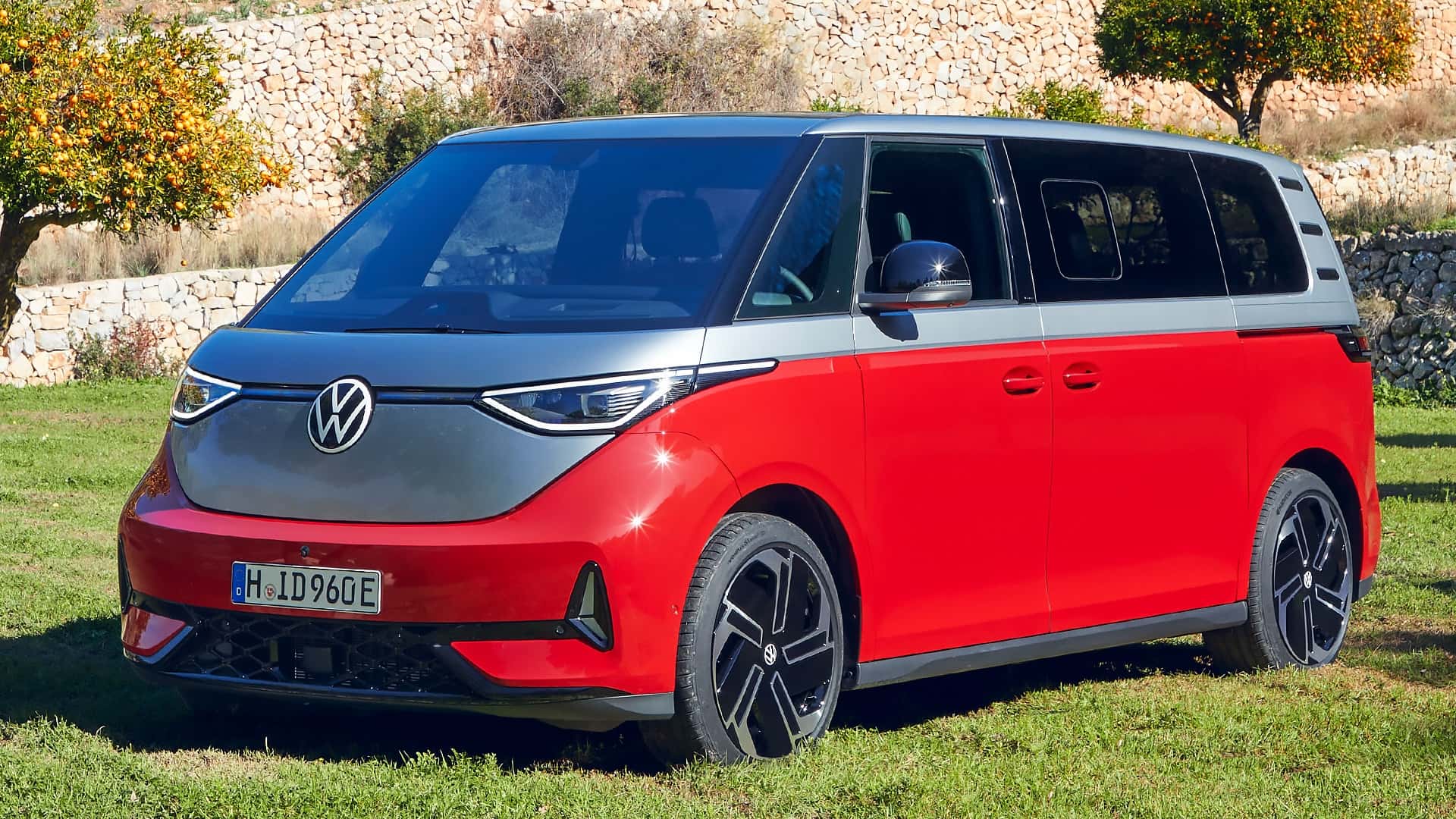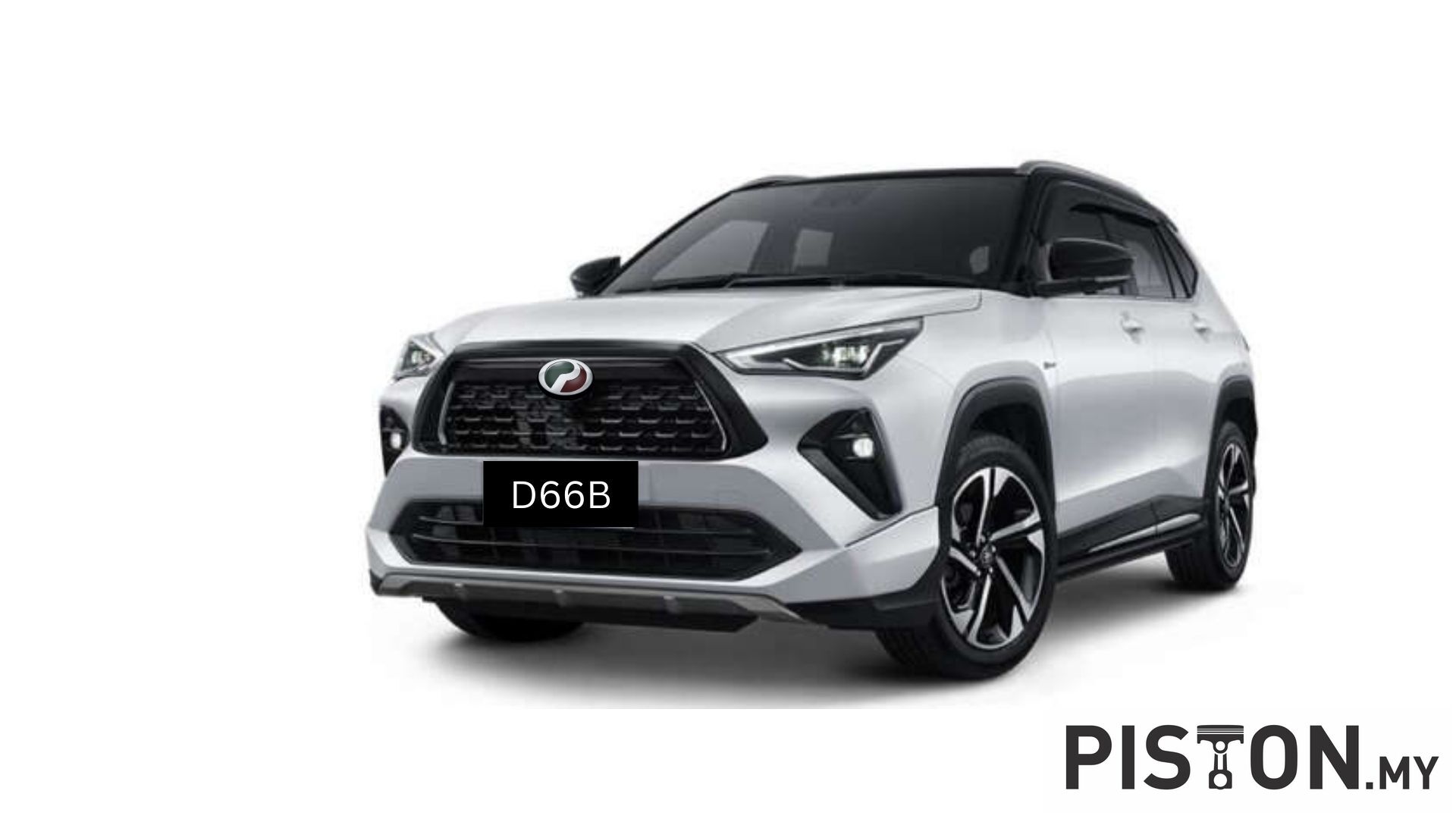Audi has unveiled the second major facelift for its popular seven-seat SUV, the Q7, as the current model approaches a decade on the market. This update, set to hit showrooms in the second half of the year, comes as Audi prepares to roll out its final new petrol-powered vehicles.
Originally introduced in 2015 and last refreshed in 2020, the latest facelift promises not only revised styling but also incorporates cutting-edge technology, marking a significant leap forward for the venerable model.
While industry norms suggest a new generation after eight years, Audi’s commitment to launching its last all-new petrol or diesel-engined vehicle in 2025 raises questions about the Q7’s future. The facelift, it seems, is designed to keep the Q7 competitive until the company transitions to electric vehicles, anticipated to begin in 2026, with an ultimate goal of ceasing petrol and diesel sales in all markets, except China, by 2033.
Visually, the facelift brings a fresh look to the Q7, featuring reshaped LED headlights with HD matrix LED technology, boasting 24 LEDs and laser-light tech promising enhanced high-beam illumination. Optional OLED tail lights with customisable light signatures add a touch of sophistication, adjusting brightness when another vehicle approaches.
Exterior enhancements include a restyled front bumper, a revised grille, and distinct air intakes, especially notable in the sporty SQ7 variant. Additionally, visible exhaust tips, new wheel designs ranging from 20 to 22 inches, and three vibrant colours—Sakhir Gold, Ascari Blue, and Chili Red—complete the exterior makeover.
Inside the cabin, the Q7 maintains its three-screen layout for infotainment, instruments, and air-conditioning controls. However, three new dashboard inlay options—Natural Elm Burl Silver, Matte Carbon Twill, and Matte Brushed Aluminium—offer buyers more personalisation choices. European models now feature standard grey seat stitching, and the infotainment screen introduces support for Spotify and Apple Music.
Technological updates include a digital instrument cluster capable of displaying the surroundings, including lane-change warnings, other road users, distance alerts, and traffic light information.
The Q7’s engine lineup remains unchanged, with options ranging from a 227hp, 3.0-litre turbo-diesel V6 to the potent 500hp, 4.0-litre twin-turbo petrol V8 in the SQ7. All models come equipped with eight-speed automatic transmissions and all-wheel drive, ensuring a dynamic driving experience.
Options for the SQ7 include a sport rear differential, larger wheels, and red brake calipers, providing enthusiasts with additional customisation choices.
Pricing details for the revamped Q7 are set to be disclosed closer to its launch in the second half of this year.
Specifications for the Audi Q7 models:
- Audi Q7 45 TDI:
- Engine: 3.0-liter turbo-diesel V6
- Power: 227hp
- Torque: 500Nm
- Transmission: 8-speed automatic
- Drive: All-wheel drive
- Audi Q7 50 TDI:
- Engine: 3.0-liter turbo-diesel V6
- Power: 281hp
- Torque: 600Nm
- Transmission: 8-speed automatic
- Drive: All-wheel drive
- Audi Q7 55 TFSI:
- Engine: 3.0-liter turbo-petrol V6
- Power: 335hp
- Torque: 500Nm
- Transmission: 8-speed automatic
- Drive: All-wheel drive
- Audi SQ7:
- Engine: 4.0-liter twin-turbo petrol V8
- Power: 500hp
- Torque: 770Nm
- Transmission: 8-speed automatic
- Drive: All-wheel drive


